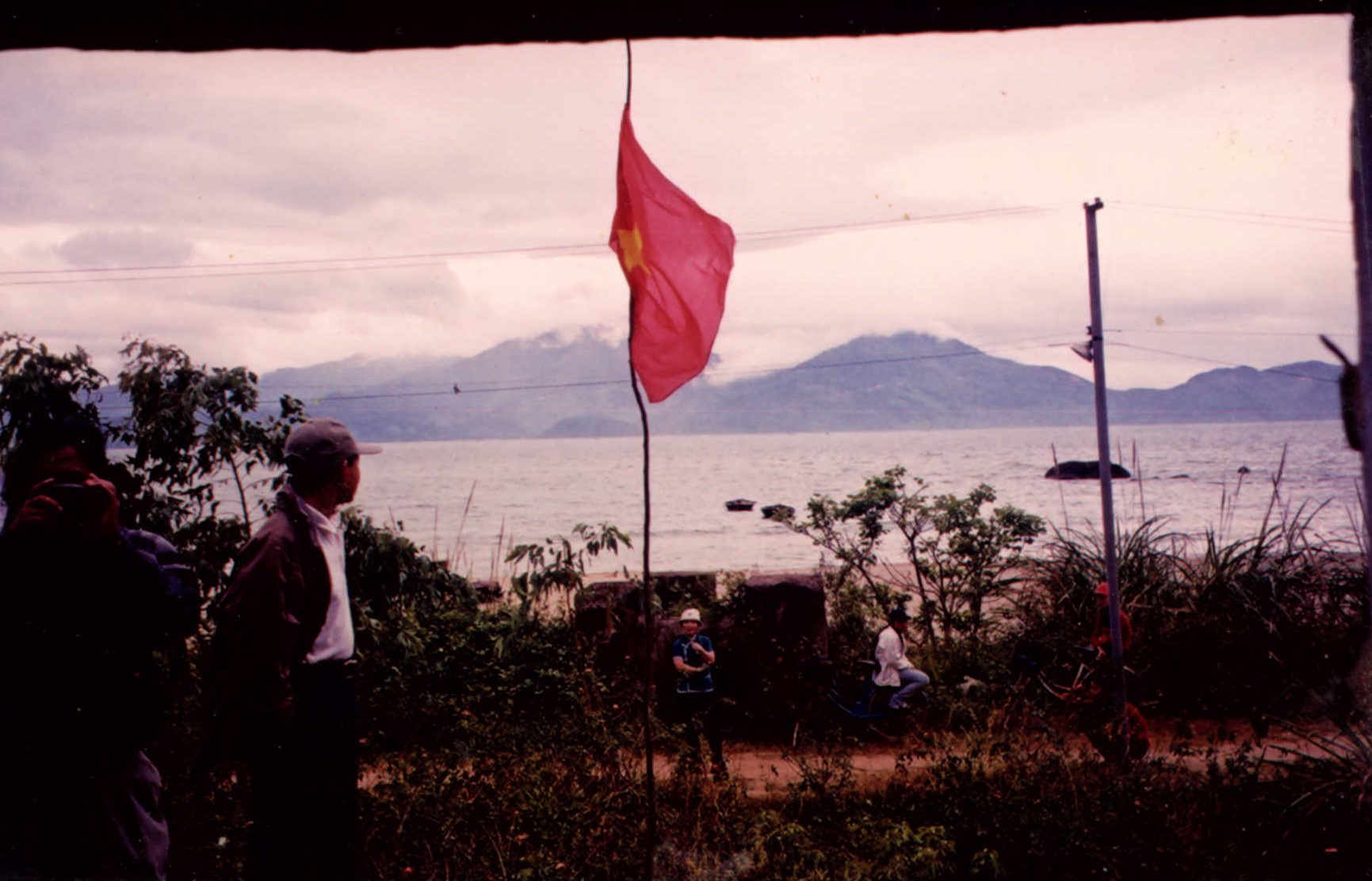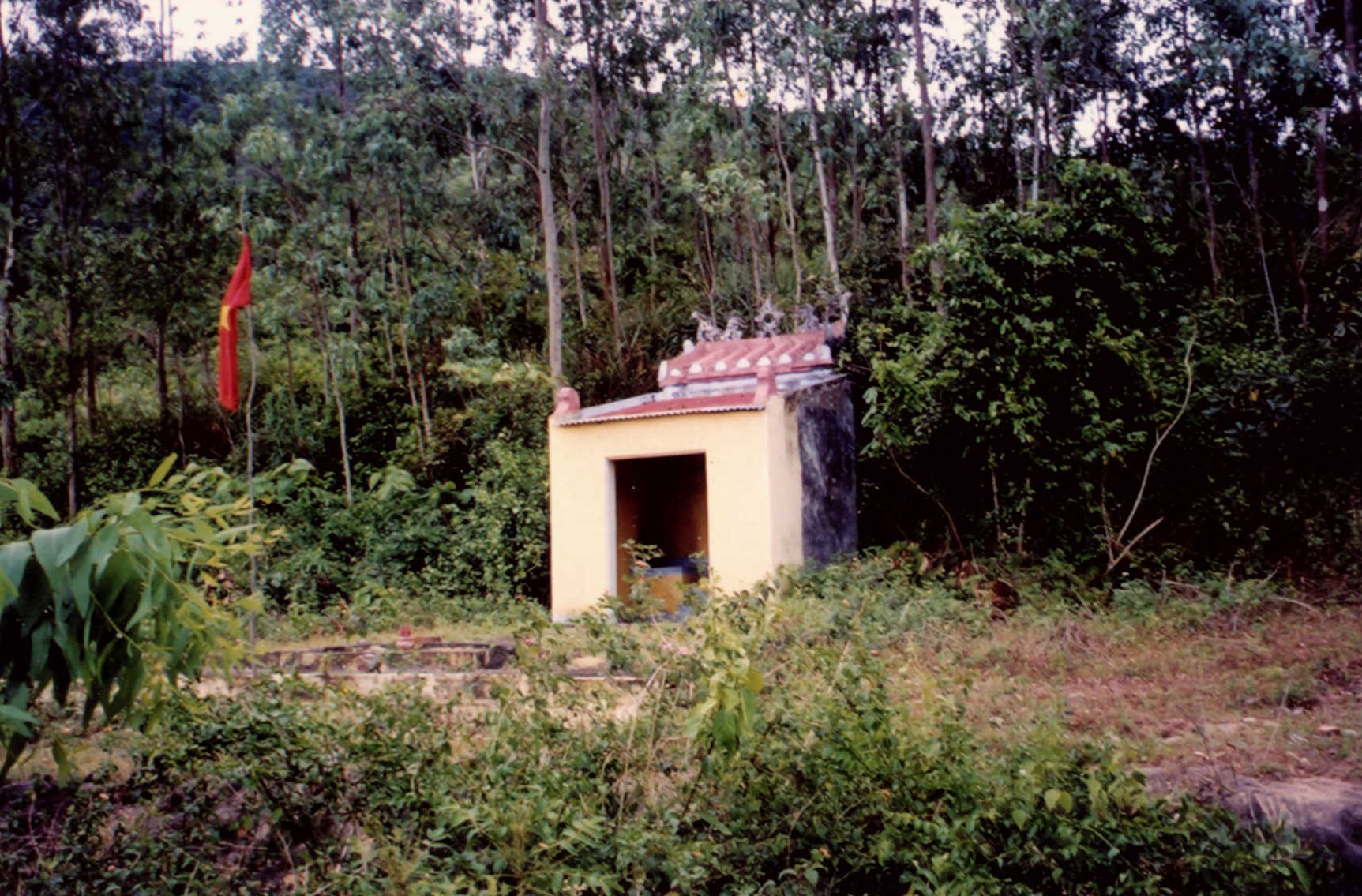Seaman William Cooke had been severely ill for a long time when died on May 10, 1845 on board USS Constitution. A member of the ship’s musical band, Cooke had suffered from dysentery, but may also have had tuberculosis.
Both were common illnesses among USS Constitution‘s crew at the time. Four others died specifically of dysentery during Constitution’s long crossing of the Indian Ocean from Madagascar earlier that year. Two more died of tuberculosis during other passages on the ship’s circumnavigation of the globe between 1844 and 1846. And it is likely that other unattributed deaths during the two-year voyage were caused by one or both of the diseases.
However, unlike many of his shipmates who died offshore and were buried at sea, Cooke died on the day the ship arrived in Touron Bay, Cochin China, near today’s Da Nang, Vietnam. The next day, Lt. John Dale wrote in his journal that Cooke “was buried onshore, at the base of the lofty promontory which forms the South Western side of the Bay. The Cochin people are certainly not so bigoted as some Christians, as they permitted the grave to be made in one of their own burial places – for the consideration of $2 with a promise to look out for it!”
And they did look after it. For the next 160 years.
It is uncertain whether the Vietnamese ever knew Cooke by name, but over the generations that followed, Cooke’s grave became something of a shrine. Spirit houses, built, maintained, and rebuilt over the following century remained associated with mariners and became a regular stop for local fishermen who gave offerings and prayers there for safe, successful voyages.
Back in the United States, Cooke’s death and burial abroad was largely forgotten until the 1960s, when America became embroiled in the war in Vietnam. More than 58,000 American servicemen died in the conflict between 1959 and 1975. Searching for meaning and closure in the aftermath of the disastrous war, American veterans who had spent time in Da Nang were attracted to Cooke’s story.
Amid all the horrible statistics of that war, USS Constitution sailor William Cooke, it turns out, was the first U.S. serviceman to be buried in Vietnam, more than 100 years before America’s war in Vietnam began.
In addition, the region where Cooke was buried held bitter significance for many U.S. veterans. Sơn Trà Mountain, the “lofty promontory” Lt. Dale had described, became known as “Monkey Mountain” to the American troops. There was an American communications facility at the top of the mountain, and thousands of Americans had served at the air base located in Da Nang before the city fell to the North Vietnamese in March 1975.
Wright Gregson, a veteran who fell in love with the country, returned numerous times to Vietnam in the decades after the war and learned about Cooke’s grave from residents in Da Nang. In the 1990s, he visited the gravesite, documenting the shrine that had been built there. In 2019, Gregson, who died in July 2022, shared his photos of the shrine with the USS Constitution Museum and Naval History and Heritage Command Detachment Boston.


In 2000, another group of American Vietnam veterans returned to Da Nang to find the grave. Led by Dennis O’Brien, who was then working for the Massachusetts Department of Veterans Services, the group had learned about Cooke’s grave from an account of the burial in A Most Fortunate Ship, an exhaustive history of USS Constitution written by former Constitution Commander Ty Martin. Unaware of whether there was any marker at the gravesite, the group sought to locate and memorialize the site. They were uncertain at the time about how their efforts might be perceived or whether they would be stopped by local authorities. Passing themselves off as fishermen with a local guide, they eventually found the same maritime-themed shrine that Gregson had photographed. A firsthand account of the expedition written by one of the group members, Peter Kneisel, was later published in the Boston Globe Magazine.
In his account, Kneisel reported the identity of Cooke’s grave was confirmed for them by a local military colonel. At first, the colonel had been suspicious of their presence, but after they admitted to their destination, he shared the story. Kneisel reported the colonel saying, “Why didn’t you ask me earlier? I never believed you were fishing.” The colonel went on to tell them how the story of the American sailor buried there had been passed down through the generations. His grandmother had told it to him.
Sadly, at some point in the years since the other veterans’ 2000 visit, the shrine appears to have been destroyed — bulldozed over for construction of a new resort overlooking the bay sometime around 2010.
This article has been made possible by a Sustaining the Humanities through the American Rescue Plan (#SHARP) grant from the National Endowment for the Humanities: Democracy demands wisdom. Any views, findings, conclusions, or recommendations expressed in this article do not necessarily represent those of the National Endowment for the Humanities.
The Author(s)
Carl Herzog
Public Historian, USS Constitution Museum
Carl Herzog is the Public Historian at the USS Constitution Museum.
